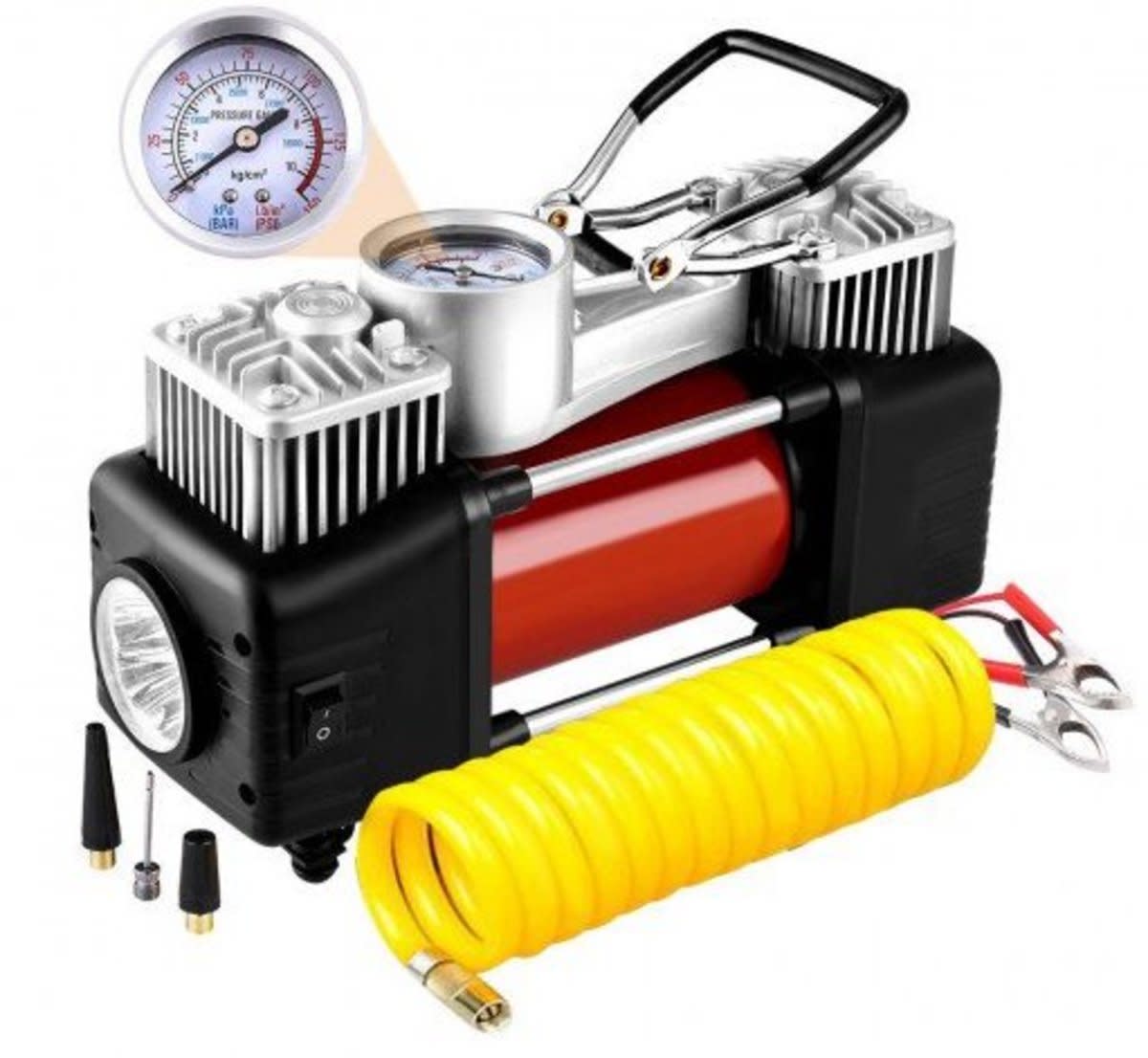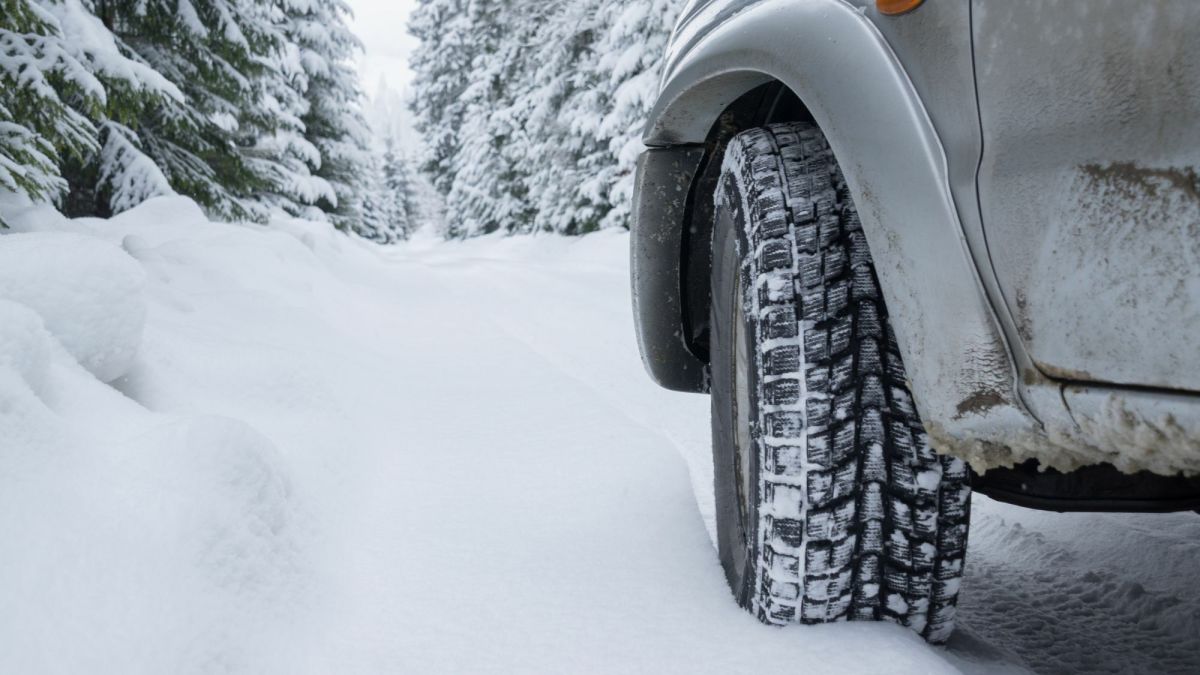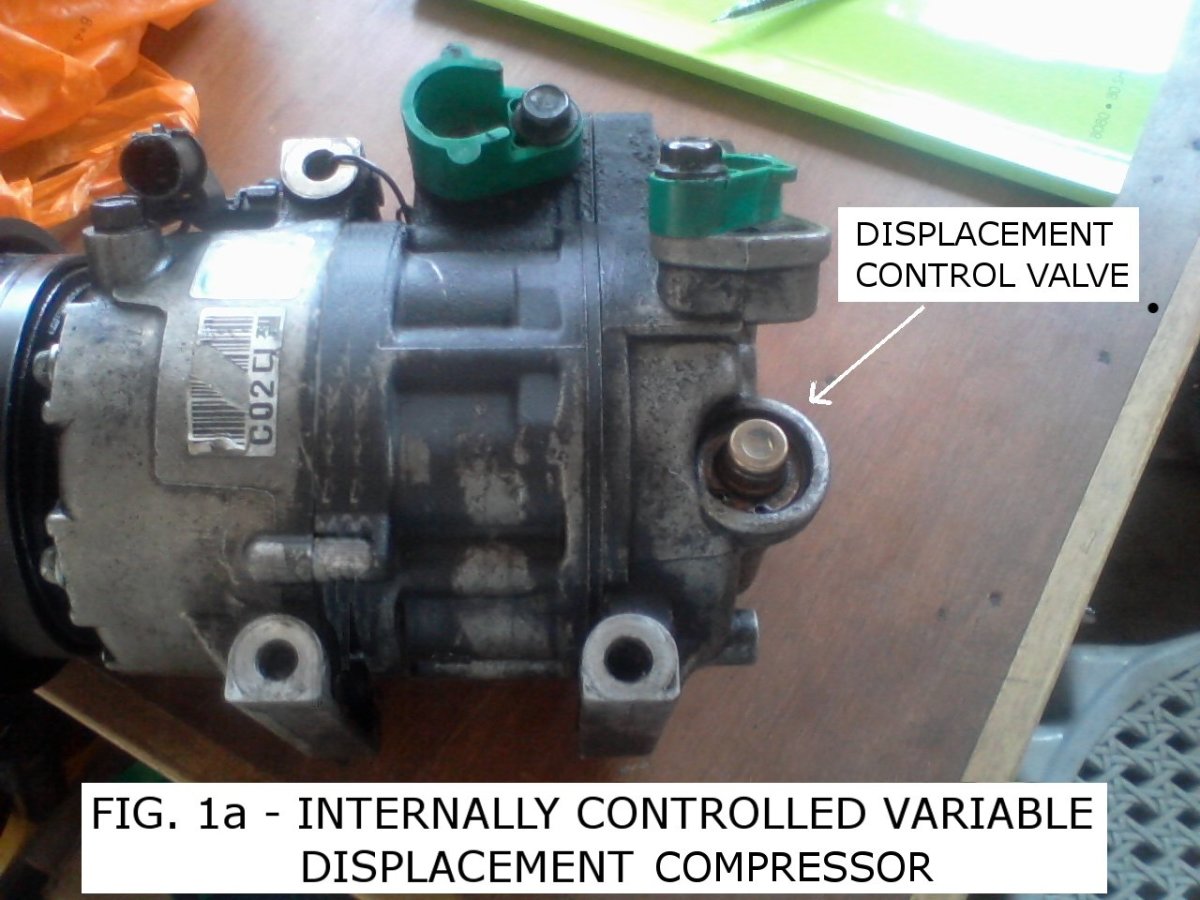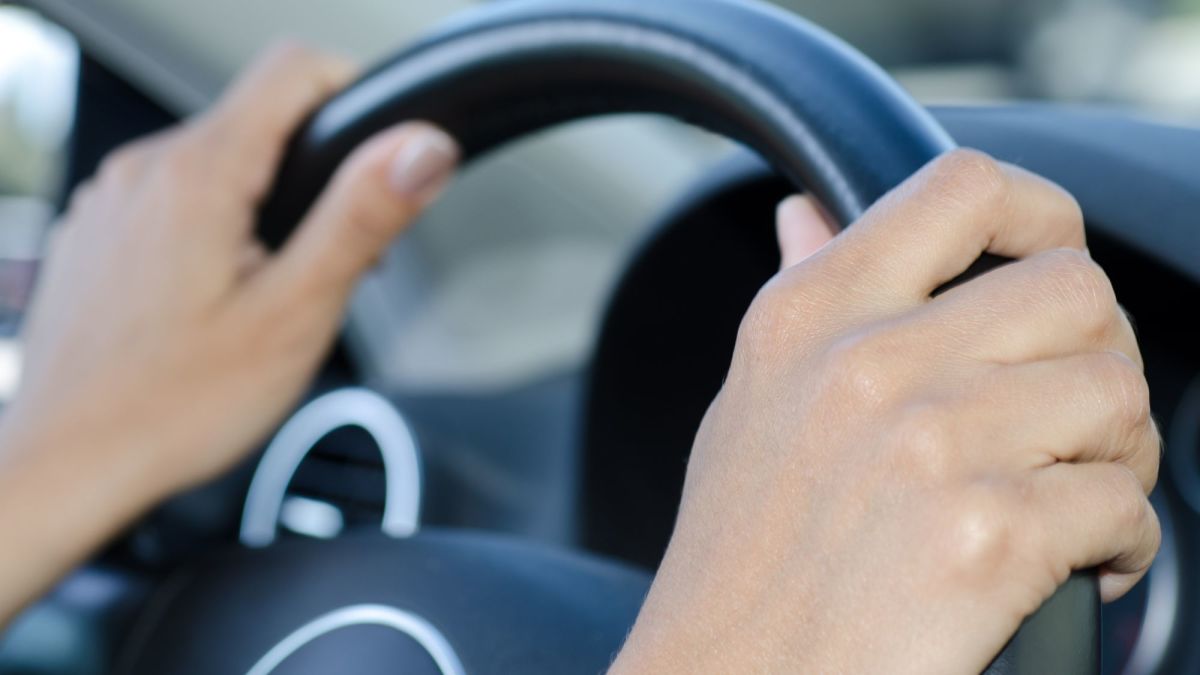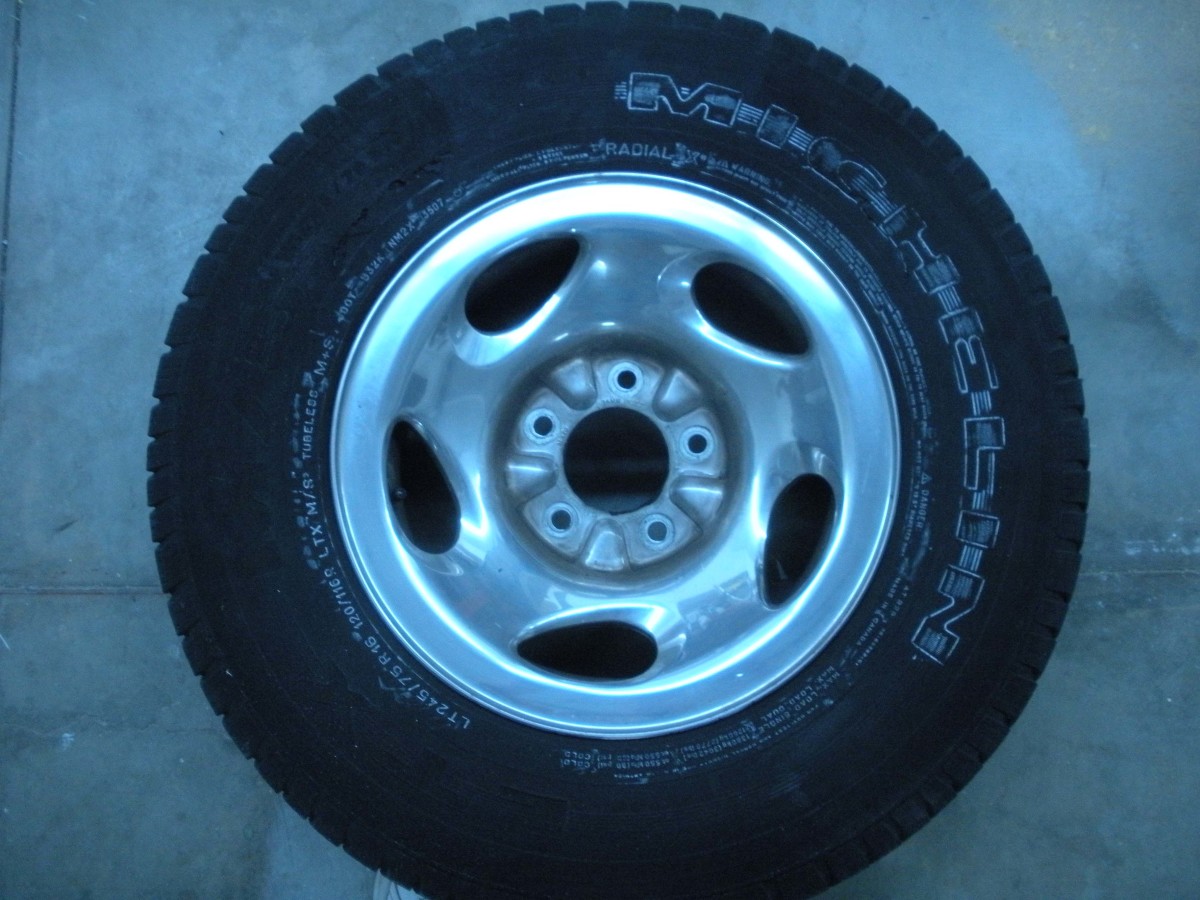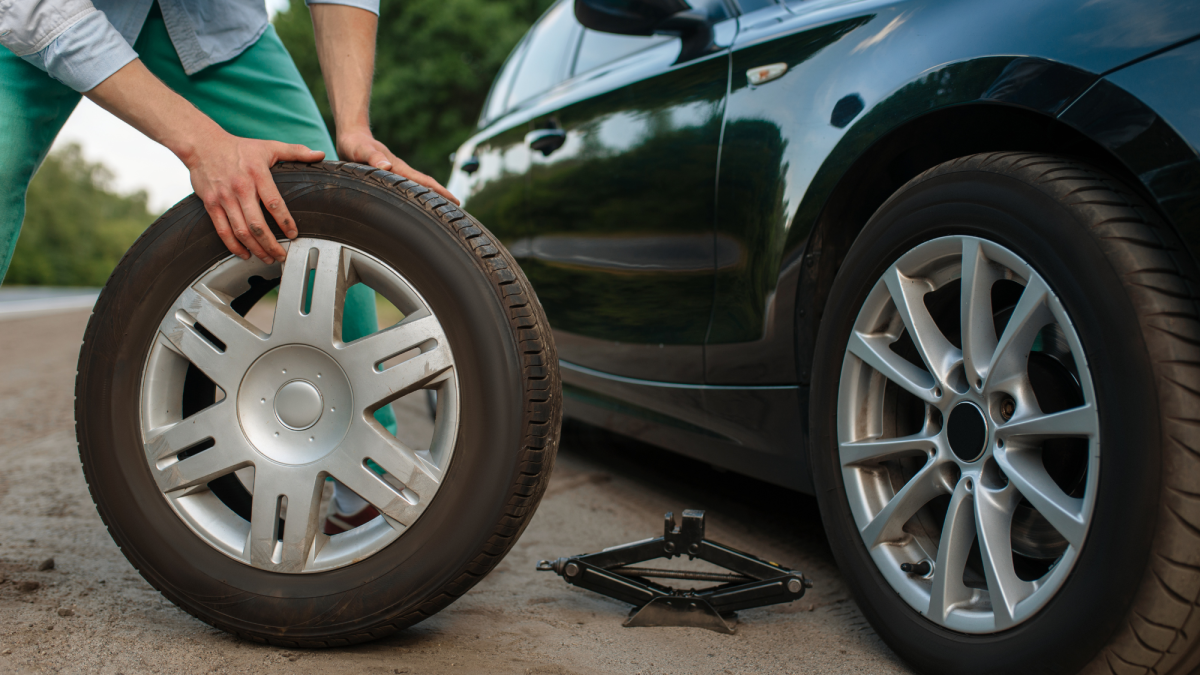Don't Pay for Air: Keeping Your Tires Inflated Without Inflating Your Debt
Keeping your vehicle's tires properly inflated is one of the most important yet overlooked aspects in staying safe and preserving your vehicle's gas mileage. Under-inflated tires will decrease fuel efficiency and increase your tires' sensitivity to the heat caused by the friction of driving. No matter how new your car or your tires, you need to check your tire pressure at least once a week. Here is how you can keep your tire properly inflated without constantly chucking all your change into a gas-station air pump.
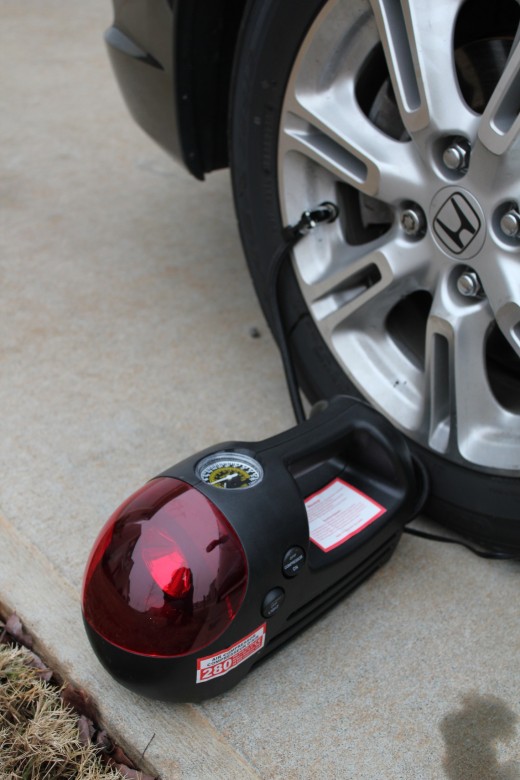
Step 1: Buy a Portable Air Compressor
You can buy a portable air compressor from any large retailer or auto parts store. If you are shopping close to the holiday season, you can also find them at various discount retailers and department stores.
These air compressors are small but capable of filling car tires to their maximum capacity. Usually they are powered through your car's 12V DC ("cigarette lighter") outlet.
They usually range in price from $10 to around $30, making them a great investment considering how much change you might throw away at the gas station pay pump. Another big advantage: you can take it with you wherever you go, so if one of your tires is low, you can fill it up as soon as you notice it.
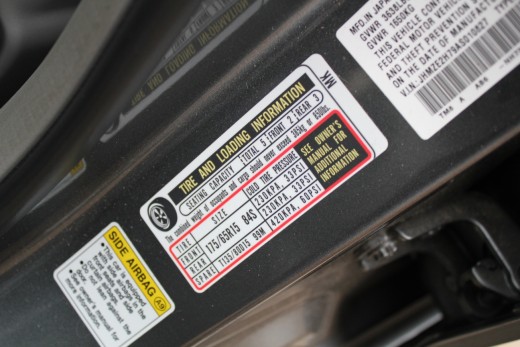
Step 2: Know the Recommended Air Pressure
Next, you need to know the air pressure value that your vehicle's manufacturer recommends for your tires. You can usually find this out from the sticker on the inside panel of the driver's side door. For most passenger cars and light trucks, the recommended pressure ranges from 30 to 35 psi (pounds per square inch).
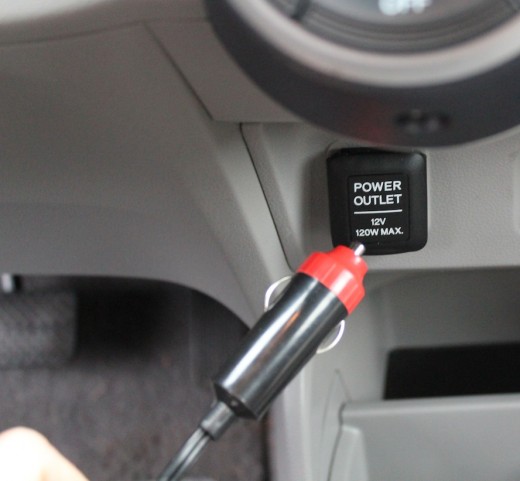
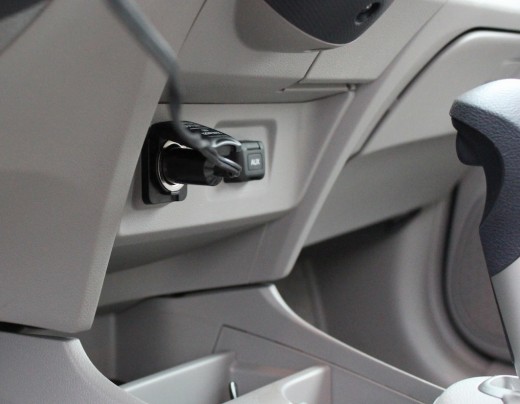
Step 3: Fill Up Your Tires!
You will then need to plug the air compressor into the DC outlet. Usually it is a good idea to roll down your window and stretch the cord through it. It will most likely be long enough for you to set the compressor on the ground by the two tires on the driver's side. You will then need to stretch the cord through the passenger's side window to fill up those tires.
Also make sure to periodically check the air pressure with a separate gauge while inflating the tire. Although the compressor will likely have a gauge built in, I find that these usually are not reliable, sometimes reading up to ten pounds above the actual pressure. If you don't already have a gauge, it's a good idea to get one of the circular ones with a needle indicator as opposed to the metal stick-type variety. These can become unreliable after a couple of years of use.
BIG TIP: Don't forget to check your spare tire's air pressure! If you drive anything other than an SUV or pickup truck, your spare tire likely requires up two times or more air pressure than the regular tires because of its smaller diameter. This also means that air leaks out of these tires faster. These “donut” style spares can be fully inflated one week and lose up to 75% or more of their air pressure the next. Of course, if you carry your air compressor with you (most of them are easily able to be stowed in the trunk or behind a seat) and you get a flat tire, you can check the spare's air pressure at that time and fill it up to its required pressure, often from 65 to 75 psi. But it is best to do this when filling all of the other tires. As in all aspects of driving, it is always best to be prepared for the worst.
Review:
-
Portable air compressors can be bought cheaply and stored in your vehicle easily.
-
Make sure to fill your tires up to the recommended pressure indicated on the label attached to your vehicle.
-
Monitor the air pressure with a separate tire gauge, preferably one with a needle and a scale higher than 70 psi.
-
Try to find an adapter that will let you connect the portable compressor straight to the battery to avoid burning out the interior 12v DC outlet.
-
Don't forget the spare tire! If you are driving a car or other compact vehicle, your spare could be smaller than the rest, requiring 65-75 psi.
-
Be safe out there!

